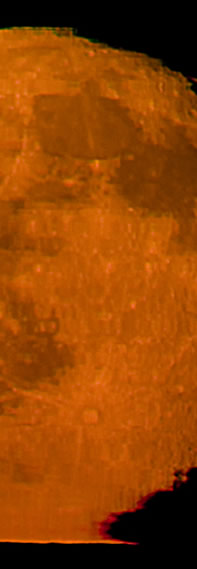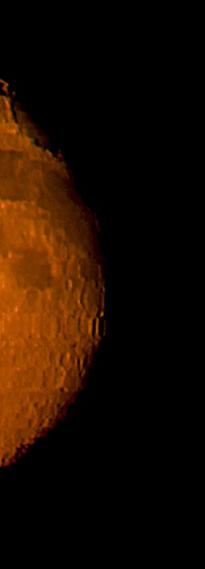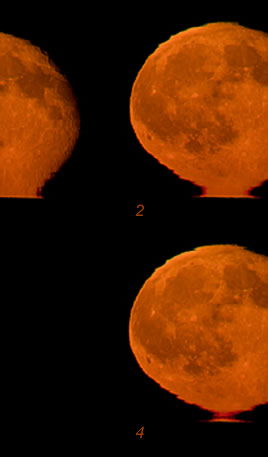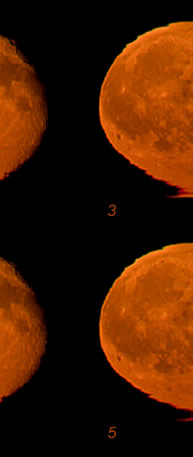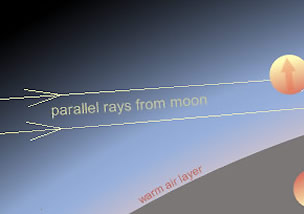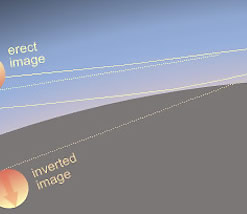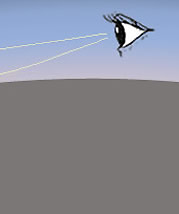Etruscan Vase Moon, Labor Day Weekend
Veteran lunar mirage observer John Stetson caught this moonrise (see sequence below) at Casco Bay, Maine on Sunday evening (Sept 6, '09). �John Stetson, shown with permission.
"The light of the moon appeared on the horizon a few minutes before the predicted/appointed time. One fellow observer noticed that some of the islands that appeared on the horizon in Casco Bay under this evening's atmospheric conditions were not usually visible."
Moon and sunrise times are computed allowing for refraction by standard atmospheric conditions. Abnormal vertical density and temperature gradients can significantly alter the times. As an extreme example, the 'Novaya Zemlya effect' produced by a cold surface layer of air can lift the sun's image above the horizon weeks before the predicted end of a long Arctic night.
Abnormal atmospheric refraction produced by a warm ocean heated air layer beneath cooler air caused this
Etruscan Vase or 'Omega' moonrise. These mirages more usually feature the sun.
Parallel rays from the moon are curved upward towards the cooler air.
An observer above the warm air layer therefore sees an inverted image below the 'real' image of the moon or sun. As the moon rises the lower image sinks. In John's sequence it can be seen sinking and separating from the upper image.
The refraction at the warm/cooler air boundary is sensitive to the angle of incidence of the moon's rays. Small deviations are vertically magnified including the difference in deflection between red and green rays. The magnification produces the 'red flash' between the two separating images and gives the classical inferior mirage green flash when the upper limb is near the horizon.
|


